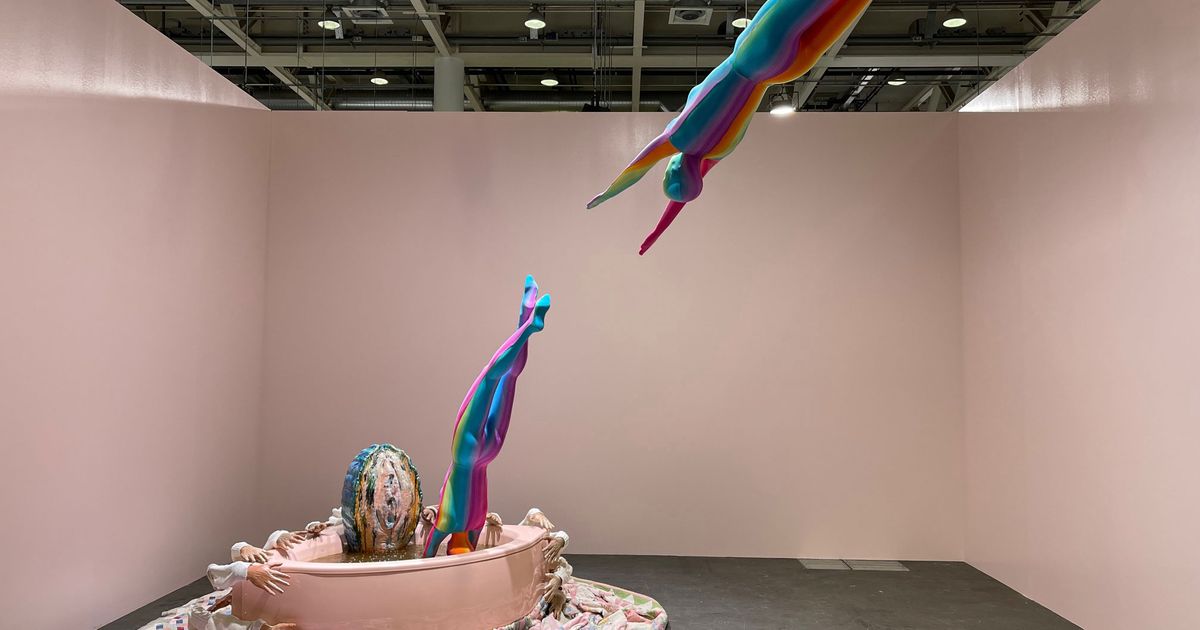
Art Basel would not be Art Basel without Unlimited, a special section of the fair dedicated to large-scale installations. This year, Giovanni Carmine, the director of the Kunst Halle Sankt Gallen, has brought together 62 works for his debut as Unlimited curator—down from 75 in 2019. As expensive as these supersized pieces are, he says, “there is still an appetite for this kind of art”.
“Some pieces need to be seen on this scale,” Carmine says, pointing to Urs Fischer’s Untitled (Bread House), 2004-06, a mammoth sculpture made of loaves of bread attached to a wooden frame. “If you saw just a model or a drawing of a bread house, you wouldn’t be able to smell it! It’s a totally different sensorial experience [in person].”
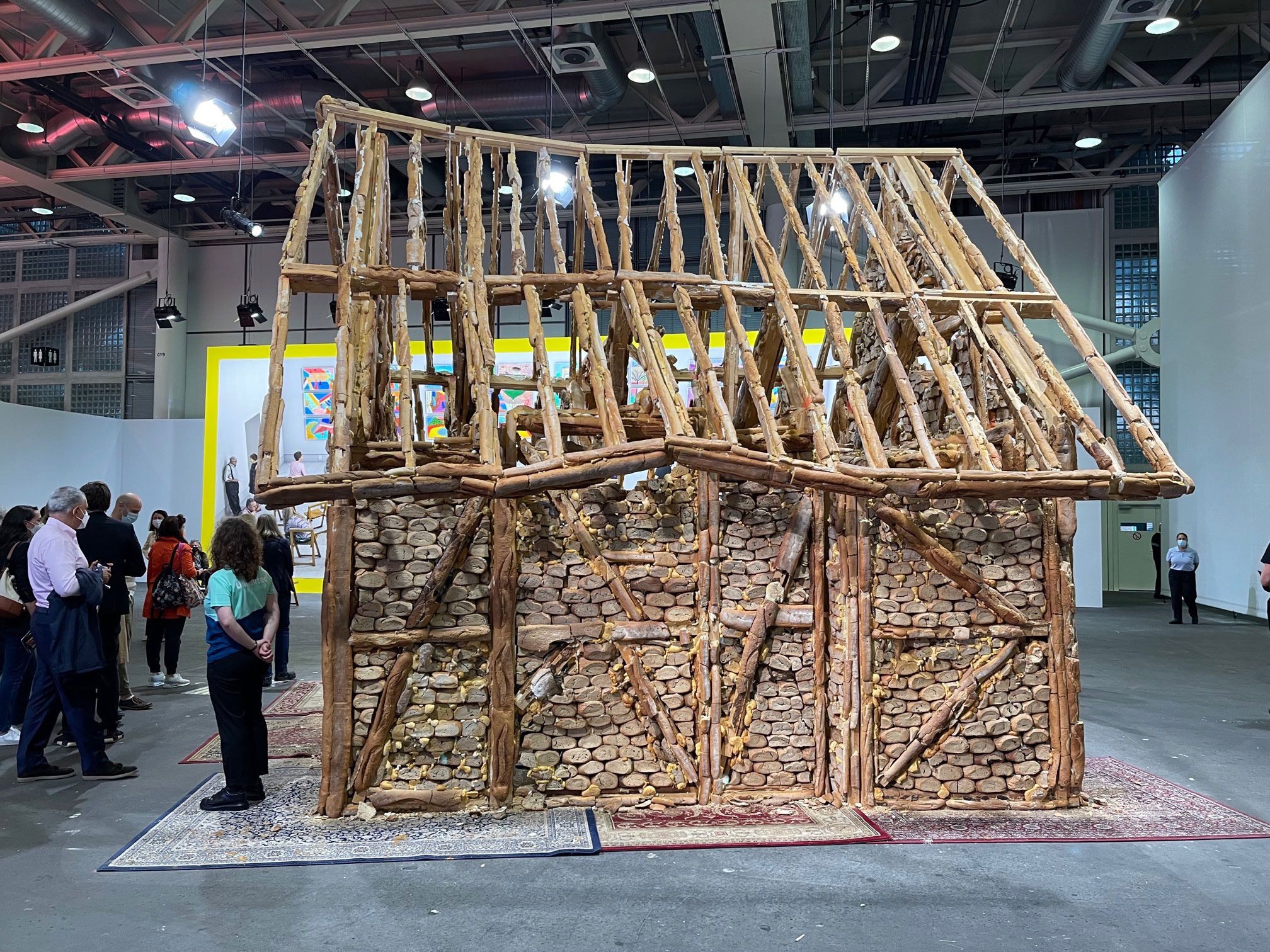
Other talking point pieces include The Outsiders (2020) by the Scandinavian artist duo Elmgreen & Dragset, a sculptural installation located outside the Unlimited entrance. The piece comprises hyper-realistic figures of two young men sleeping in an intimate spooning position in the back of a vintage Mercedes Benz bearing Russian licence plates.
Two passes to this year’s fair and a map of the exhibition hall can be glimpsed on the dashboard. “So many people were looking inside, including art handlers,” Carmine says. “One of the men is looking into our eyes.”
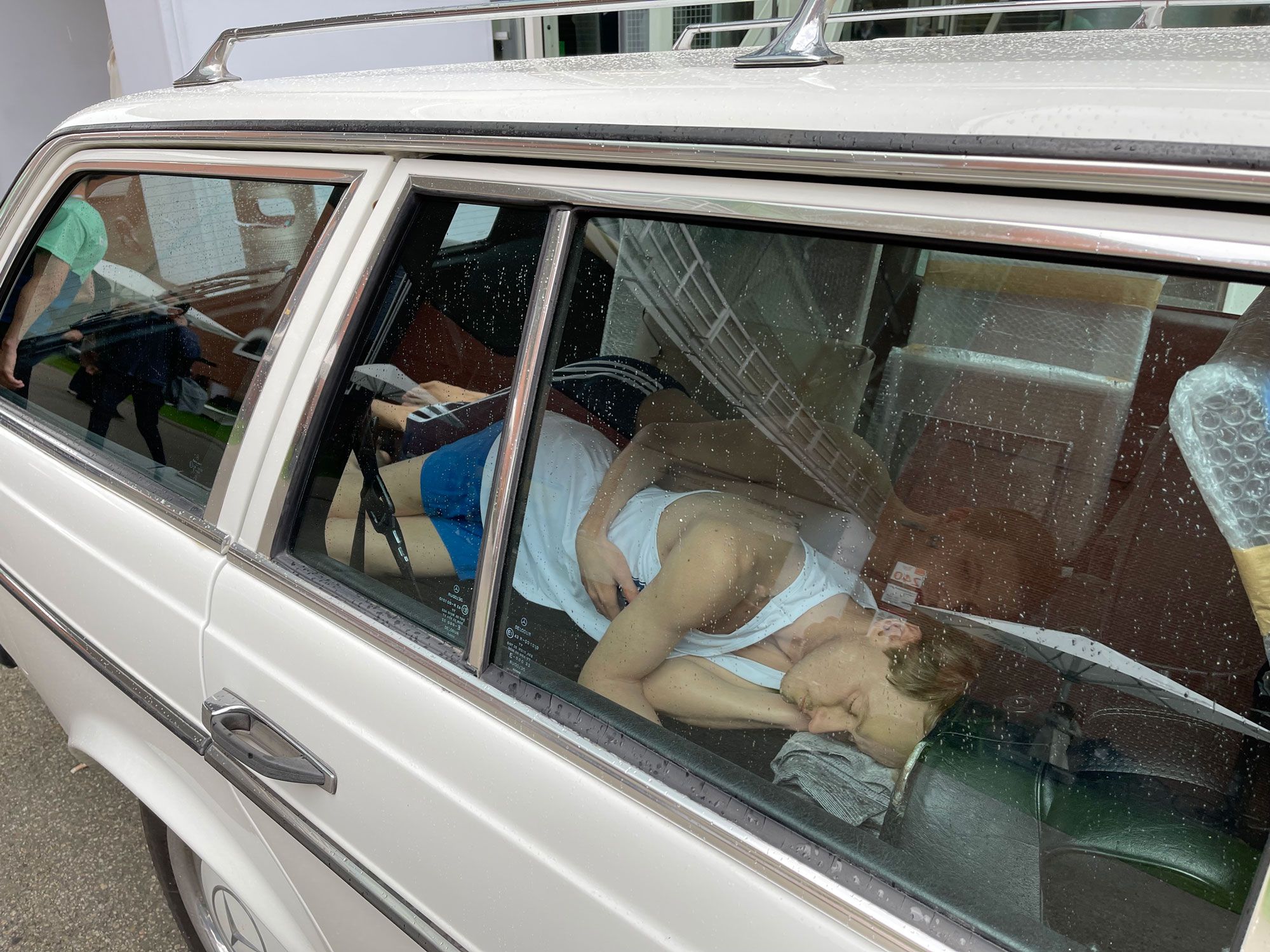
After a two-year hiatus, Unlimited had to be reconfigured for the age of Covid-19. The layout was planned “at a time when we did not know what the health regulations would be”, Carmine says. “We have designed the architecture with crowd capacity in mind; the entrances are bigger for instance. It is a mirror of the current situation in that sense. Galleries take a risk in participating in Unlimited.”
Yet dealers are still keen to take part after Art Basel’s 2020 edition was cancelled due to the pandemic. Carmine says there were 150 to 200 applications this year. “I designed the Unlimited exhibition for last year—we lost some pieces but had new applications this year. Galleries did what is do-able; the quality is amazing.”
During a walk-through, Carmine also discussed Liam Gillick’s The Lights are no Brighter at the Centre (2017), an installation that emerged from the artist’s 2017 collaboration with the UK band New Order. “This will appeal to people of a certain generation, it’s about rave culture,” he says.
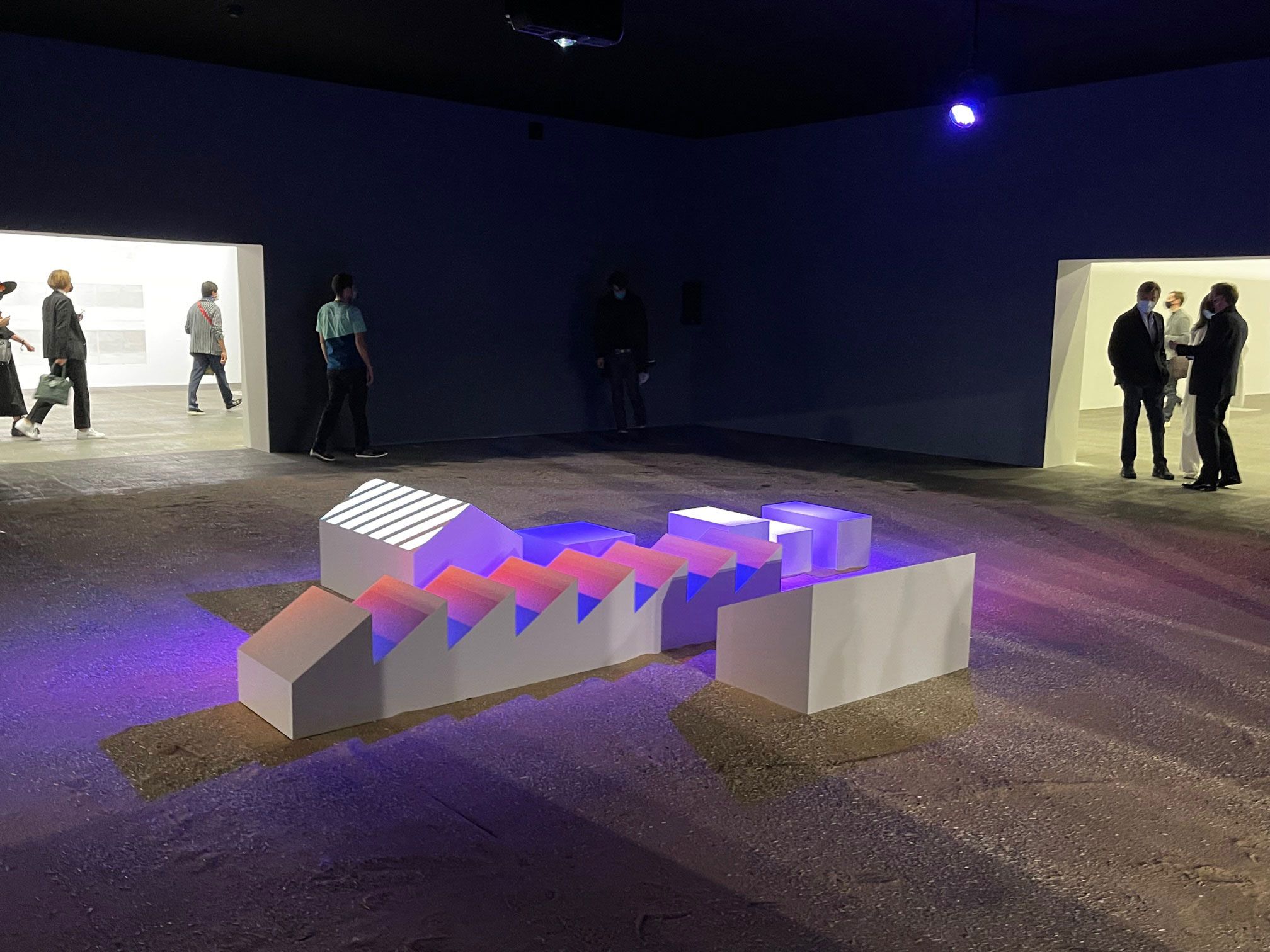
Meanwhile, Mario García Torres has made a work that directly reflects the tumult caused by Covid-19. It Must Have Been a Tuesday (2020) features 164 photocopies mounted on canvas corresponding with the number of days that the artist’s studio was closed during Mexico’s first lockdown last year. “It is about the passing of time; it’s very moving,” Carmine says.
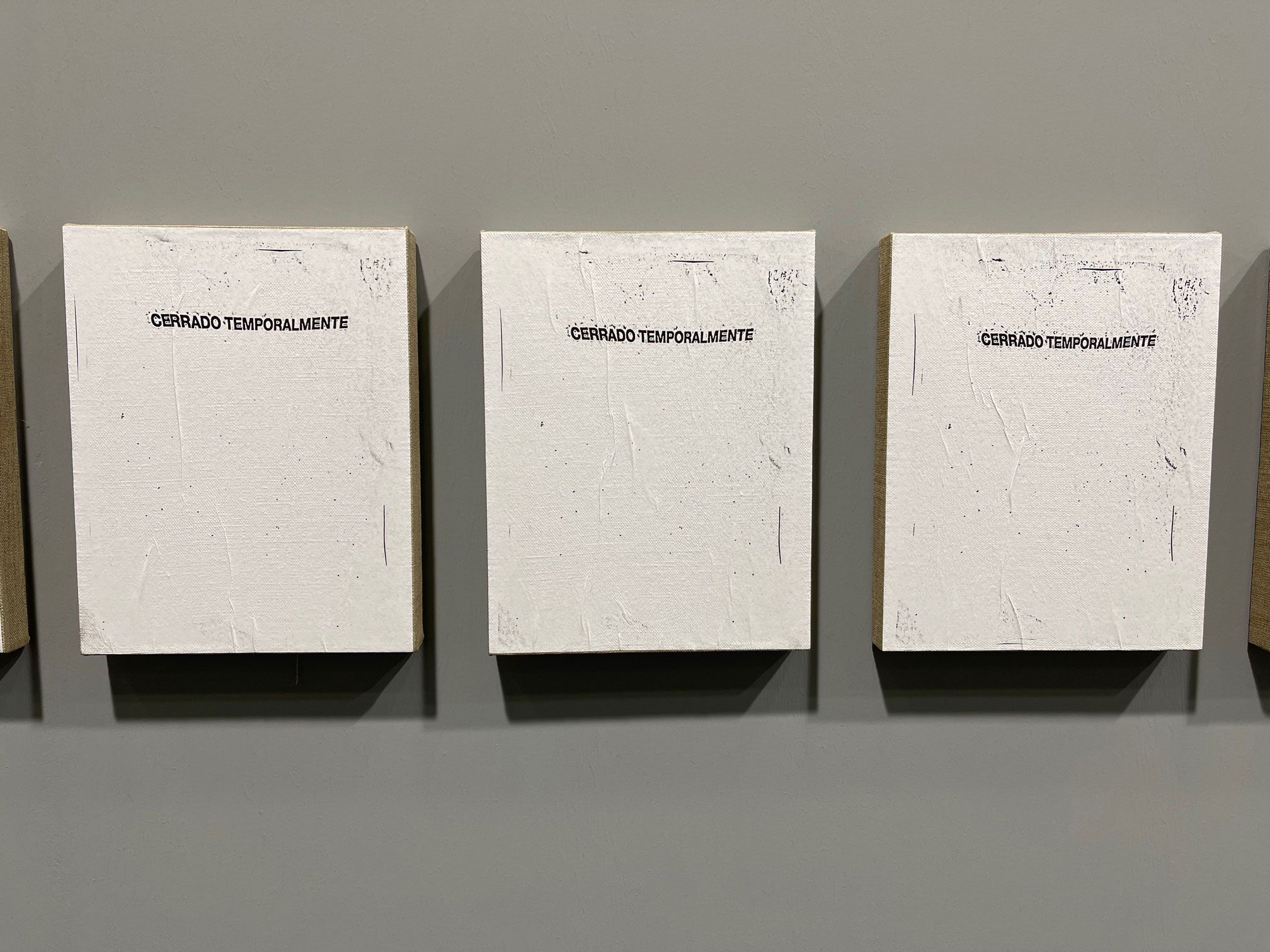
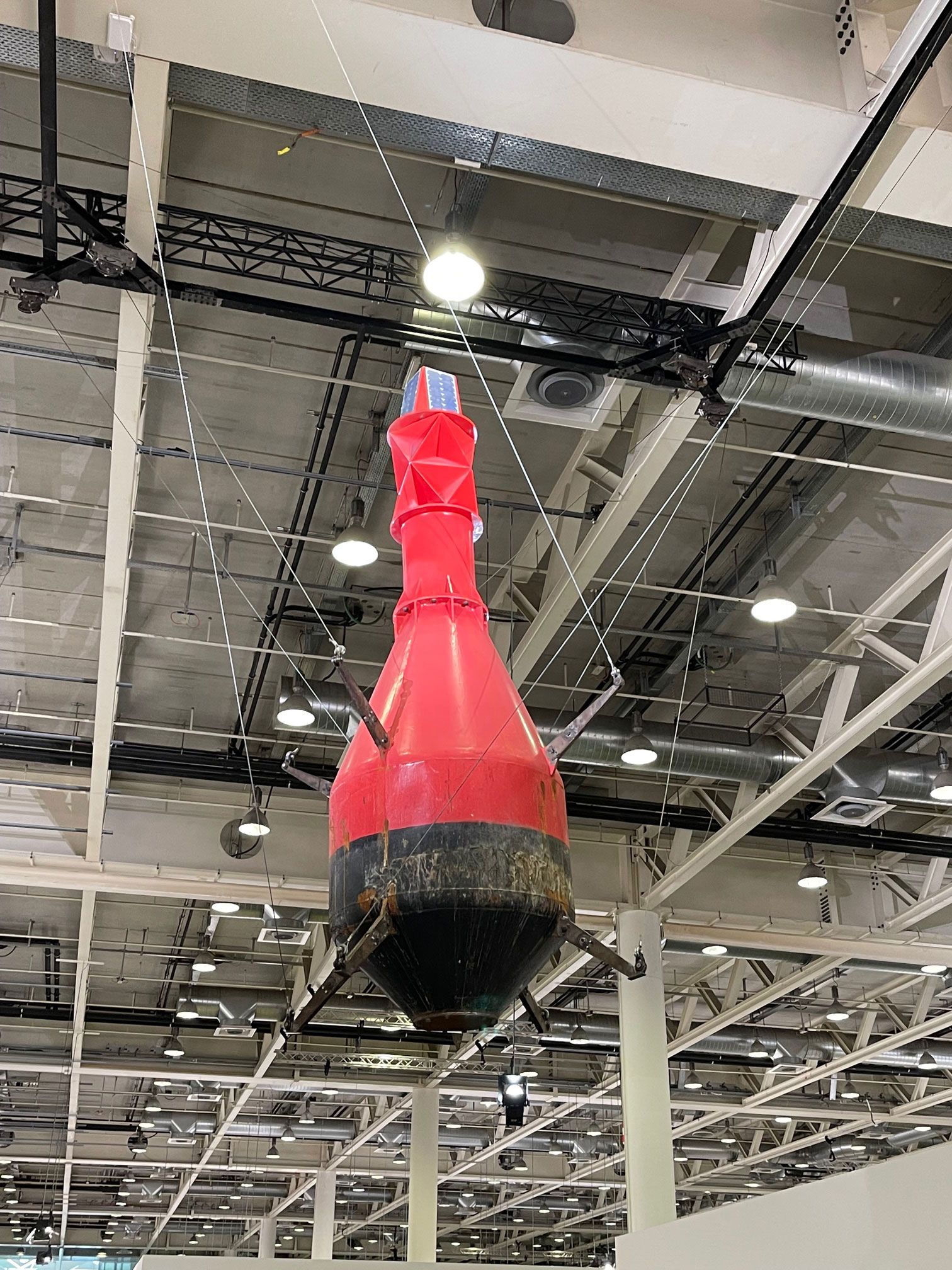
A high-sea buoy gliding overhead in the Unlimited Space will also turn heads. The vast blood-red steel object, created by Julius von Bismarck (Die Mimik der Tethys, 2018/20), replicates the movements of a buoy at sea. “This is one of the most technically accomplished works,” Carmine says. Which works does he think will incite debate? “Kris Lemsalu’s Holy Hell O (2018) will split opinion.”
The piece—showing multi-coloured sculptural works diving into a jacuzzi surrounded by disembodied hands—is “humorously repulsive, one could say—and all the more intriguing for us to ponder”, says the Unlimited catalogue.
Source link : https://www.theartnewspaper.com/news/art-basel-2021-unlimited












